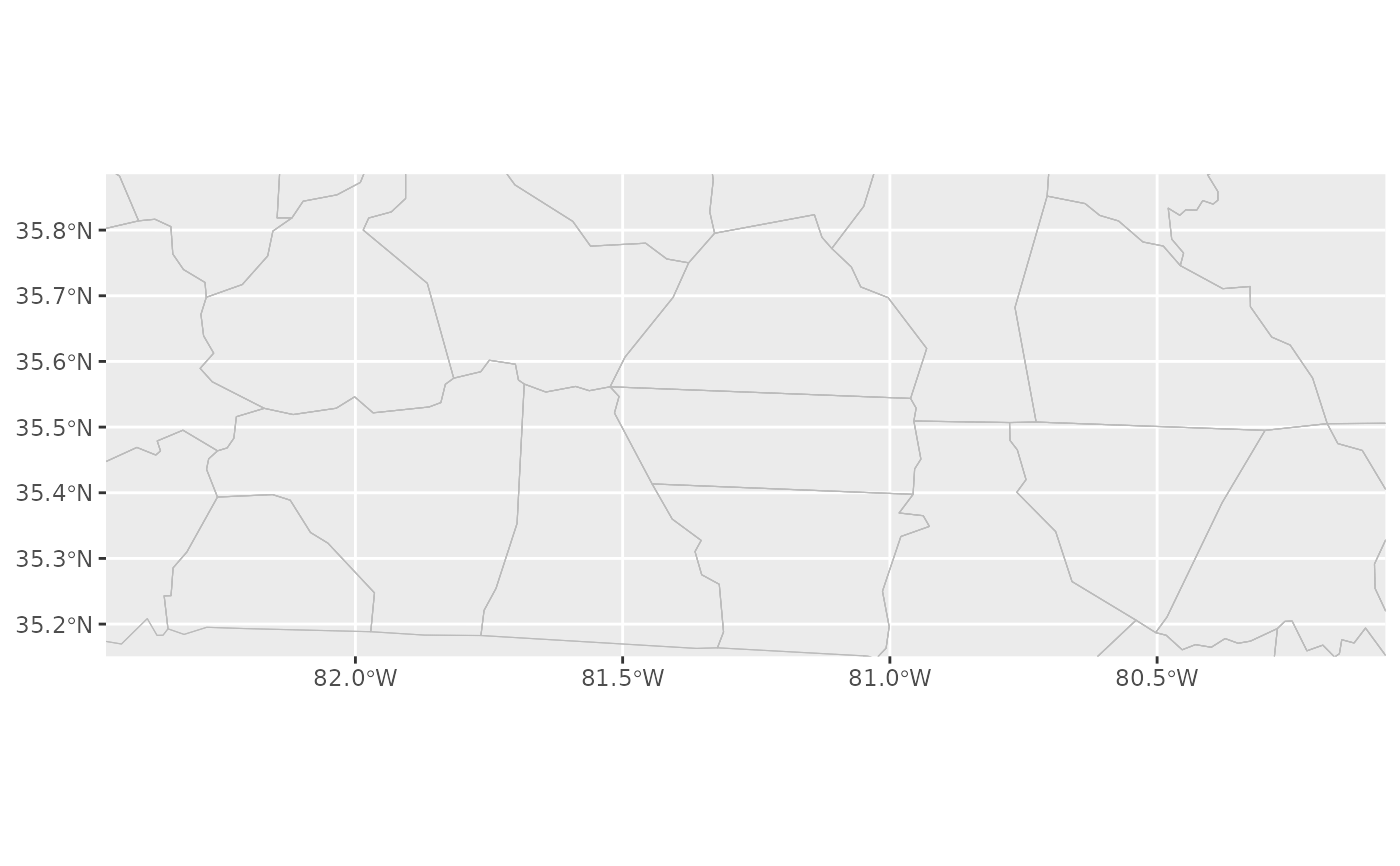This is a wrapper around ggplot2::coord_sf() that automatically calculates
coordinate limits based on the data and/or any additional locations. The
bounding box will be calculated to encompass all of the included
locations.
Arguments
- include
Vector of feature names that should be shown on the map.
- include_data
Scalar logical, if true then all features with data are also included.
- ...
Additional arguments passed to
ggplot2::coord_sf().
Details
This should be added to the plot after the call to one of the ggautomap
geoms. It will copy the data and feature_type from the first such
layer in the plot. If there is no such layer, it will attempt to guess the
feature type and use the data and location mapping found at the top
level ggplot() call.
Examples
library(ggplot2)
# zoom in on locations that have data:
cartographer::nc_type_example_2 |>
ggplot(aes(location = county)) +
geom_boundaries(feature_type = "sf.nc") +
geom_choropleth() +
coord_sf_zoom()
 # or just zoom in on specific locations regardless of the data:
cartographer::nc_type_example_2 |>
ggplot(aes(location = county)) +
geom_boundaries(feature_type = "sf.nc") +
coord_sf_zoom(include = c("Rowan", "Polk"), include_data = FALSE)
# or just zoom in on specific locations regardless of the data:
cartographer::nc_type_example_2 |>
ggplot(aes(location = county)) +
geom_boundaries(feature_type = "sf.nc") +
coord_sf_zoom(include = c("Rowan", "Polk"), include_data = FALSE)
